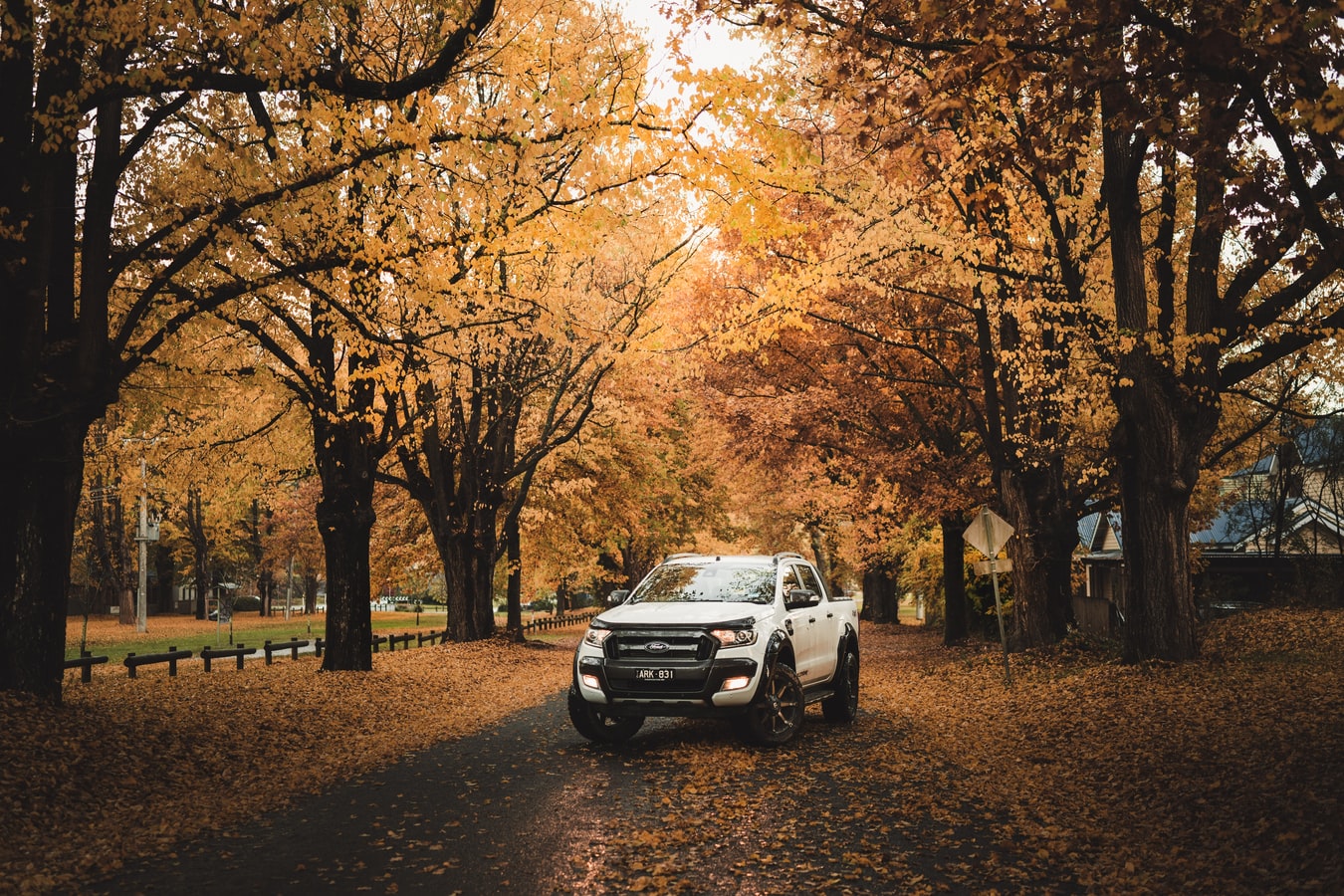
Fall is the time for leaf peeping, pumpkin picking, and hayrides. However, it also brings changes in weather and road conditions, which can make driving a little more challenging. From wet leaves to sun glare, you’ll have to deal with a wide range of safety hazards that you may not encounter during other times of the year. Follow these six tips to drive smart and safe in fall.
Beware of the Leaves
Admiring colorful foliage is one of the most popular pastimes in fall. However, leaves can be a threat to your safety when they become damp or wet. They create a slippery surface on the road that can cause your vehicle to lose traction and skid. When you’re driving on a road that’s covered with leaves, you should slow down and maintain a greater distance from the vehicles around you. This is especially important when you’re trying to stop, making a turn, traveling on a winding road, or driving a loaded truck.
Additionally, the beautiful leaves in the fall can indirectly cause accidents because of the great photo opportunities they provide. It’s common to see people pulling over to the side of a road to take pictures of brightly colored trees. When you see this happening, drive slowly and keep an eye out for people opening the doors of their vehicles.
Look Out for Wildlife

Image via Unsplash by filipz
Wild animals are particularly active during fall partly because it’s hunting season for deer and many other animals. When these animals feel their safety is threatened, the animals will scatter and sometimes run into oncoming traffic on the road.
Fall is also mating season for dear, so these animals may be more active around wooded areas as they search for mates. This activity may make them more likely to run onto the road. In addition, smaller animals will be on the move during the fall as they search for suitable places to hibernate in the winter.
Hitting an animal at a high speed can cause significant damage to your car or truck and endanger your life, especially if it’s a large animal, such as a deer, elk, moose, or bison. Therefore, you should exercise extra caution when you’re driving through a wooded area or other places with a significant wildlife population. Reduce your speed, constantly scan for animals on both sides of the road, especially when you’re driving in the dark, and make sure your headlights are clean and in good working condition.
Allow Your Eyes to Adjust
When Daylight Saving Time ends in fall, you have to be prepared to spend more time driving in the dark. Darkness can compromise your depth perception, peripheral vision, and color recognition, especially if you’re past the age of 50. Additionally, the glare from the headlights of oncoming vehicles can temporarily impair your vision. These conditions can make you more prone to accidents.
You may find it difficult to see well in the dark immediately after coming out of a well-illuminated building or parking garage. Give your eyes some time to get used to the darkness before you start driving. This can increase your ability to see road signs clearly and judge the distance and speed of other vehicles.
Get Rid of Glare
During the autumn equinox, the sun moves nearer to the horizon. At certain times of the day, it shines at eye level and reflects off of other vehicles, buildings, and structures at low angles, resulting in a strong glare that can undermine your vision. The glare is especially bad right after sunrise and before sunset.
If you need to drive at these times of the day, you should have a pair of sunglasses or another type of eye protection handy. Also, wash your windshield more frequently because dirt streaks and dust can worsen glare.
When you’re driving at night, avoid looking straight into the lights of oncoming vehicles.
Prepare for Fog and Frost
In fall, you also have to deal with some hazardous harbingers of winter, particularly toward the end of the season. Chilly autumn mornings can lead to fog formation, which reduces your ability to see clearly and perceive distance.
This is the time to use those fog lights that are found on many cars and trucks. These lights shine low, wide beams to enable you to see the edges of the road, which is also useful for spotting critters. You should use them together with your regular headlights, but avoid using high beams because the bright light will bounce off the fog and back into your eyes.
The cooler temperatures in fall can also cause dew to freeze overnight, which can make roads and bridges icy and slippery. Overpasses and bridges will freeze first, so you should slow down and keep a safe following distance when you’re traveling on them.
Check Your Tires
Tires with enough tread perform better on wet and slick surfaces. A substantial amount of rain in the fall makes driving more difficult and dangerous. If your tires are worn, your car or truck will have a longer stopping distance and a greater tendency to skid and go out of control. Replace your tires if their grooves are less than 4/32 inch deep.
It’s also important to keep an eye on the tire pressure so that your vehicle is able to move smoothly, safely, and efficiently. Regardless of the weather, tires are expected to lose a minimum of 1 pound per square inch (PSI) of pressure every month. This rate accelerates when the weather becomes colder. Every 10-degree dip in temperature reduces your tire pressure by 1 PSI. Make a point to check your tire pressure at least once a week throughout the fall season.
One of the best ways to get your Ford car or truck ready for fall is to schedule an appointment with an authorized Ford service center. At Wendle Ford, we have a state-of-the-art facility, factory-trained technicians, and a large inventory of genuine Ford parts to meet all of your auto maintenance and repair needs. Contact us today to find out more about our services.
Featured Image via Unsplash by mountainmofo




